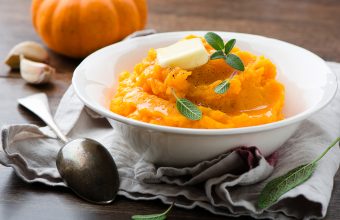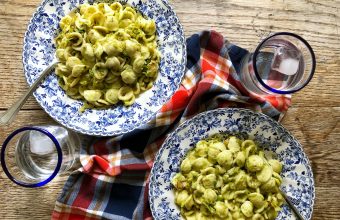In grade four or five, a traumatic “How Sausages Are Made” farm exhibit was the catalyst for my vegetarian journey, an endeavor my supportive parents and younger sister joined me on with varying degrees of enthusiasm. This was the mid-to-late-90s and the vegetarian option in restaurants, if there was one, was garden salad, and recipes left a lot to be desired. I not-so-fondly remember a lot of rubbery unmarinated tofu, cheese cannelloni, and bland veggie burgers from that period in time. Suffice to say there were not many “How to Become a Vegetarian Family” articles for my parents to refer to.
Toronto-based Registered Dietitian Jasdeep Singh recalls a similar childhood experience. “While I was growing up as a picky child in a vegetarian household, it seemed as though there were no protein-rich options for me,” she explains, “Fast forward to 2021, and now there are numerable options including chickpea pasta and almond flour that can be good sources of protein, and of course, the trendy plant-based ‘meat’ options.”
While I’m no longer a strict vegetarian, I do eat a predominantly plant-based diet with my partner and toddler, meaning that the ingredients we use primarily come from plant sources such as vegetables, fruits, nuts and seeds, and whole grains. If you are vegetarian-curious, whether for reasons related to health, the environment, ethics or even to save money, read on to learn about some of the present-day resources making plant-based eating easier (and tastier!)
Where’s the Protein?
If you’re looking for tips on how to become a vegetarian family, the first is ensuring everyone’s nutritional needs are being met. While there are multiple considerations when building well-balanced meals, including fiber, fats and carbohydrates, the classic question vegetarians get is: “But how do you get enough protein?” “As plant-based diets become more popular and sustainable, ways to include plant-based protein [have] become more achievable,” says Jasdeep. “Plant-based proteins can be included in meals or snacks using tofu, edamame, lentils, beans, falafel, Greek yogurt, hummus, peanut butter, cheese, nuts, and seeds.”
As for how much protein growing kiddos need, Jasdeep says, “The protein needs of our body increase as we age. For example, infants need 9 to 11 grams of protein a day and children need 13 to 19 grams a day. In their teenage years, males need 52 grams a day, whereas females need 46 grams a day.” “To put that into context, according to Healthline, 100 grams of seitan, a derivative of wheat gluten, is equivalent to 25 grams of protein. The same amount of tofu, tempeh, or edamame will net you 12-20 grams of protein. Chickpeas, lentils, and beans also have a high protein count, between 14-20 grams for a cooked, one-cup serving.
Quinoa, nutritional yeast, oats, and vegetables such as broccoli, avocado, and sweet potatoes are also a source of the macronutrient, albeit in smaller quantities.
Plant-Based Options for Busy Families
If planning plant-based meals feels overwhelming, a good way to start could be with a meal kit service, particularly if you already subscribe to one. Hello Fresh, GoodFood, and Chefs Plate have vegetarian meal plans with offerings like Falafel Rainbow Wraps, Creamy Mushroom & Miso Spaghetti, and Firecracker Cauliflower.
There are also some exclusively vegetarian and vegan meal kit services like Plant Prepped whose menu includes items like Pad Thai and Tofu Banh Mi, and Sorry I’ve Got Plants offering dishes like Chili & Garlic Chow Mein and The “Big Mac.”
Simple, Delicious, Family-Approved Plant-Based Recipes To Start With
The first step in discovering how to become a vegetarian family is to start cooking! With so many vegetarian recipes at our fingertips (what a difference!) it can be hard to know where to start. Here are a number of toddler (and adult) approved recipes that I keep coming back to again and again.
- Cookie+Kate’s Favourite Quinoa Salad is quick and easily adaptable—I love to serve it with falafel balls or goat cheese—and it tastes just as great, if not better, the next day.
- Feasting at Home nailed the tofu with her Bali Bowl, which can be customized based on veggies on-hand.
- Lazy Cat Kitchen’s Vegan Fried Rice is quick, flavourful, and filling, and feels healthy (in a good way!)
- It Doesn’t Taste Like Chicken’s Seriously The Best Lentil Shepherd’s Pie is serious comfort food and a great make-ahead dish.
With restaurants and major grocery chains finally recognizing the demand for plant-based options (here are the best vegetarian restaurants for families in Toronto, Ottawa, Calgary, and Vancouver) companies vying to make the best meat substitutes, and countless vegetarian recipe bloggers, there has never been a better time to eat vegetarian—whether it’s your plan to go full veg, or you just want to add some delicious plant-based meals into your rotation!
Tagged under: vegetarian,Vegetarian kids,going vegetarian,how to go vegetarian as a family,vegetarian family






